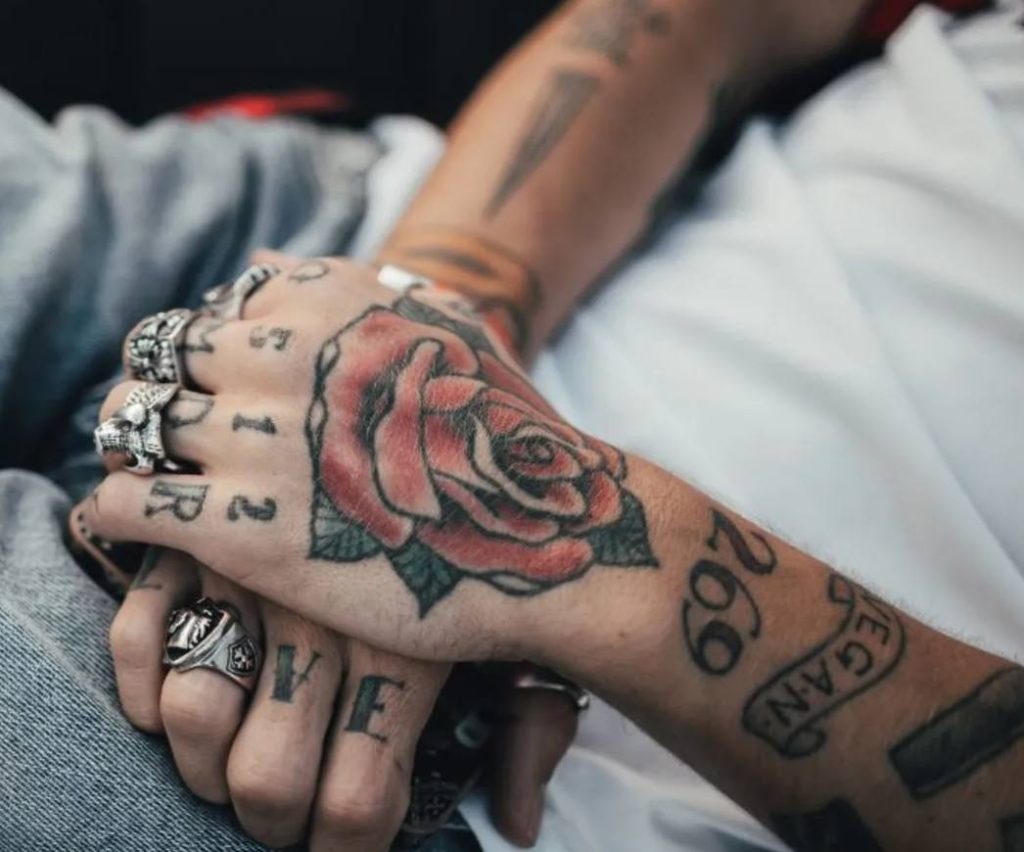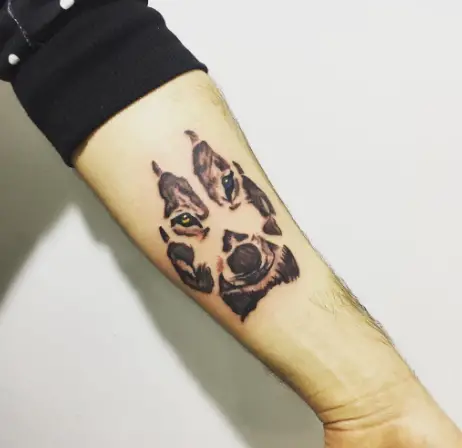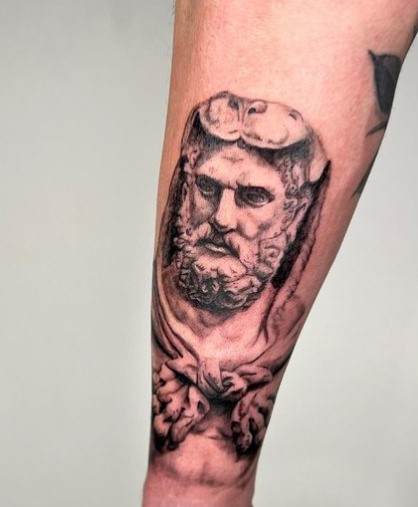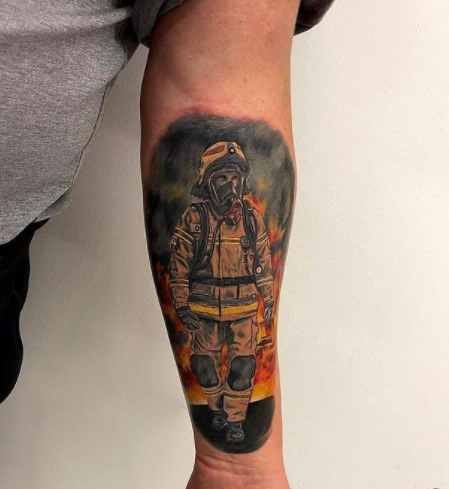As old as humanity itself, tattooing has long been a source of pride and humiliation. People’s attitudes toward it have altered and are still up for debate. The Tahitian term “tattau,” which means to strike or tap, is where the word “tattoo” originates. Most of the ancient world saw a lot of tattooing. Japan and ancient Egypt both had tattoos. For thousands of years, the Mori people of New Zealand have used holy Ta Mko tattoos to symbolize both their communal and personal identities.
However, no civilization can claim to have created the art form originally. Europe and North America have both historically engaged in tattooing. On their pottery, the Greeks painted tattoos of their Thracian neighbors and represented them speaking an Indo-European language. The Picts, who were the ancient occupants of what is now northern Scotland, were renowned for their complex tattoos by Roman historians.
Tzi the Iceman, a 5,300-year-old mummified body discovered frozen in ice in the Italian mountains in 1991, had the oldest tattoos ever discovered. In southeast Utah, 2,000-year-old tattoo needles were found in Pueblo archaeological sites in 2019. The cactus spines that were covered in yucca leaves still had tattoo ink visible on them.
Meaning of Old Tattoos
Many tattoos’ original meanings have been forgotten. However, physical characteristics like scarification, tattoos, and body piercings have always been a clear way to identify people within a group and groups within a culture. A tattoo plays a significant role in one’s personal identity.
Tattoos have historically and culturally served as both sources of shame when used as a form of punishment and symbols of distinction, given as rewards for accomplishments or to mark the passage into adulthood.
Tattooing has an inherent element of pain, and for many people, the ability to endure it was essential to get started. At a tribal level, tattoos can distinguish between friends and enemies outside the group and can also signify age, marital status, authority, and class. In several cultures, women’s tattoos served as status insignia while also guaranteeing that they were worthless to neighboring tribes.
Globally, native tattooing is all but extinct, but in recent years, tattoos have somewhat undergone a rebirth in Europe and North America. Although the reasons for this are not entirely obvious, tattooing in the ancient world shares many similarities with tattooing in the current era.
Tattoo Culture in Different Regions
Maori
The history of tattooing among the Maori people of New Zealand is extensive. Tattooing is now widely accepted to have originated in East Polynesia and spread to the Maori. The Maori placed a lot of emphasis on face tattoos because they believed that the head was the most sacred portion of the body. A Maori who held a position of authority was almost certainly tattooed. Like this, someone lacking status probably doesn’t have any tattoos.
Puberty is when tattooing first became popular. It was a sacred ceremony that occurred as part of a religious observance.
Warriors with tattoos were more alluring to women and intimidating to foes. The crude and painful tattooing procedure frequently left a person bedridden for many days until the swelling subsided and the tattoo wounds healed. This is intriguing since tattoos were accepted in Maori society despite how tattoos are typically perceived as rebellious in Western cultures. Refusing to get a tattoo was a defiant act.
Egyptian Tattoo Culture
The stitching and pierce techniques were the two primary ancient tattooing methods used by the Egyptians. A stitching technique was used to draw lines on a person’s skin, very much like how we would put stitches down today. With a length of twine that had been stained with ash, the tattoo artist would stitch into the skin of a subject to create lines.
The twin would become stuck as the needle was inserted into the skin, causing the soot to form a dark line. These skin stitch tattoos were frequently transformed into various hieroglyphics with a variety of meanings.
The Pierce method was another conventional tattooing technique that was widely employed in Egypt. To create the image, tiny dots were created by puncturing the skin with a pin or needle. To ensure that the dot is vivid and noticeable even after it has healed, the pin would be covered in ink.
Although the procedure took much longer since the needle was inserted manually rather than using a tattooing gun, this is perhaps the historic tattoo technique that is most comparable to how tattoos are performed now.
Samoan Tattoo Culture
Rake and striking stick tattooing was a traditional tattoo method that was highly popular in Polynesian cultures. This required the employment of a tool that resembled a rake, typically a stick with a needle connected to it and a striking stick that was used to guide the rake. When receiving a tattoo, this Samoan method allowed for more accuracy and more elaborate designs unique to this culture. Although a wider range of designs was permitted, this method of tattooing was notoriously unpleasant and had a significant risk of infection.
Indian Tattoo Culture
Tribes dispersed across the enormous Indian subcontinent have been tattooing for many centuries. The tattoos were seen by the tribes as impassible ornaments or to dissuade other tribes from stealing young women by making them appear undesirable.
In the northeast, headhunters would get tattoos on their faces listing the number of victims they had killed. Permanent tattoos have a long history in the oppressive heat of southern India. They were once referred to as pachakutharathu, and they only lost favor around 1980. To ward off evil, the tattoo artists would go from place to place inking labyrinthine snares on people’s bodies.
It would be hard to list every tattoo tradition that exists on the Indian subcontinent because of the region’s lengthy and complicated history of people. In certain civilizations, getting a tattoo was a way to identify someone as belonging to a lower caste and keep them there.
The Chinese Tattoo Culture
The history of tattoos in China spans many centuries. It is known as ci shen in Mandarin and has a troubled past. Typically, it is viewed as a disgusting degrading of the body. Three of the bandits from the 12th century are even said to have full-body tattoos in the classic Chinese novel Water Margin. Yueh Fei of the South Song Dynasty is featured in perhaps the most well-known tattoo story.
A superior above Yueh Fei switched to the side of the enemy in a conflict with adversaries to the north. Yueh Fei left the army and returned home in protest of this action. His mother abruptly became hostile to him once he resigned, mocking him for leaving his nation. She tattooed jin zhong bao guo, which means “serve his country with ultimate loyalty,” over his back to politely remind him of his allegiance.
China has a history of tattooing criminals, just like Japan does. Serious criminals could be banished and permanently marked with a tattoo, making it impossible for them to re-enter society unnoticed. Tattoos are stigmatized as being associated with organized crime, much like in Japan. However, tattoos are also a part of young culture and fashion in a nation with over 1.3 billion inhabitants.
Japanese Tattoo Culture
When it comes to tattoo culture, Japan has a long history, with many various applications for tattoos. As people associate this kind of art with the Yakuza, tattoos are highly taboo in the culture nowadays. The bamboo tattoo technique is one of the ancient tattooing methods that originated in Japan and later expanded throughout Asia.
In this conventional tattooing method, a piece of bamboo is decorated with approximately twenty sharp edges, which serve as the needle. These sharp bamboo edges are coated with ink to start the process!
Although most modern designs now employ sanitized metal instead of bamboo, some of the more traditional styles are still very popular in this region of the world! Although Japanese culture and tattoos have a long and interesting history, they are getting more and more popular.
African Culture
Tattoos have a long history in Africa. In other parts of Africa, tattoos have different connotations than in Egypt, where they are thought to have represented fertility and God worship. Due to historical Islamic influences, tattooing has generally been considered forbidden in North Africa. Tattoos are viewed as a gift from Allah, like spray-painting graffiti on the body. Nevertheless, tattoos have a history in North Africa, maybe as a subculture or because of disobedience. Skin scarification is a distinctive form of tattooing that is practiced in sub-Saharan Africa.
In it, a practitioner cuts the skin in predetermined patterns using a tool with a sharp blade. Over time, scar tissue covers the wound, leaving the shape. These scars were utilized to fend off evil, although being risky due to the possibility of infection.
Nowadays, cicatrization—a related procedure—is frequently employed. In it, the skin is deeply slashed, and the wound is then covered in soot or ash. The skin around the wound protrudes upward because of the soot or ash, creating a three-dimensional elevated scar. Regular tattoos have also become more well-liked. The degree of tattoo complexity sometimes indicates a person’s social standing in several tribes.
Greek and Roman Ancestors’ Tattoo Traditions
The tattoo cultures of the ancient Greeks and Romans are notably distinct from all others, and they were among the first two civilizations to be known to have used classical tattooing methods as a form of corporal punishment. There are records of tattoos being used to mark people who were deemed to be criminals as well as those who had perished in combat. The Samians are a fantastic example of this, and after they were vanquished, they received owl tattoos! This demonstrates the diverse methods tattoos were applied across cultures!
United States Culture
American tattoos can be categorized into two historical periods: those from pre-colonial Native American culture and those from modern American society. The early 1700s expedition to London of four Mohawk men may be the most well-known example of Native American tattoos making an impression on the British. These men had tattoos on their arms, faces, and chests, and it is difficult to overstate the fervor they instilled in London. Both the tattoos and the men themselves captured the attention of the crowd. It functioned as a microcosm of how the West viewed native people; at the same time, people respected the guys as heroic and despised them as barbarians.
In any case, tattoos were popular among American Indian groups. They were made by pricking the skin with sharp objects like needles and bones, then filling the wound with dark soot. In the past, people got tattoos to mark significant victories in battle and in life.
Tattoos were once associated with outcasts, sailors, and motorcycle riders in the modern United States. However, tattoos have proliferated and become well-liked among young people, maybe thanks to the television program Miami Ink. This program demonstrated the allure and artistry associated with tattooing. The general public’s opinion of tattoo studios as hip places to visit and work changed as a result. Even today, this trend is still developing.
What Does Tattoo Symbolize in the Old Era?
Many tattoos’ original meanings have been forgotten. However, physical characteristics like scarification, tattoos, and body piercings have always been a clear way to identify people within a group and groups within a culture. A tattoo plays a significant role in one’s personal identity. Tattoos have historically and culturally served as both sources of shame (when used as a form of punishment) and symbols of distinction (given as rewards for accomplishments or to mark the passage into adulthood). Tattooing has an inherent element of pain, and for many people, the ability to endure it was essential to get started.
At a tribal level, tattoos can distinguish between friends and enemies outside the group and can also signify age, marital status, authority, and class. In several cultures, women’s tattoos served as status symbols while also guaranteeing that they were worthless to neighboring tribes. Globally, native tattooing is all but extinct, but in recent years, tattoos have somewhat undergone a rebirth in Europe and North America.
Although the reasons for this are not entirely obvious, tattooing in the ancient world shares many similarities with tattooing in the current era.
Lastly, we can say, the history, meaning, and methods for getting tattoos have always been fascinating. Tattoos never go out of style, whether they represent a cultural rite of passage, a sentimental object, or just a very cool design.

My name is James Dalton specialize in developing research-based content on the fashion & lifestyle industry. And has good experience in tattooing. Tattooing is my hobby and worked for some years as a tattoo artist.



